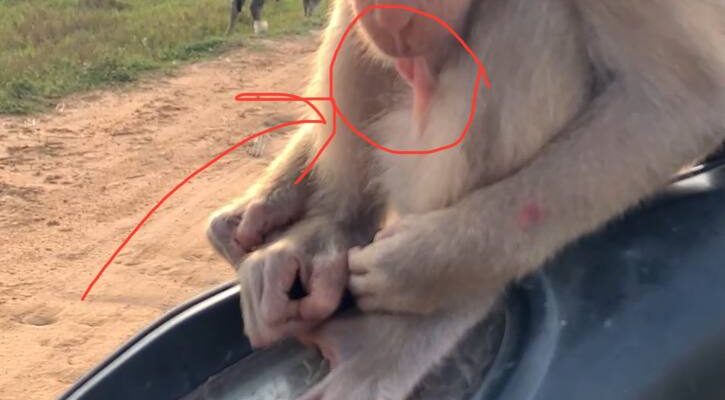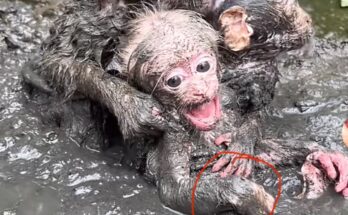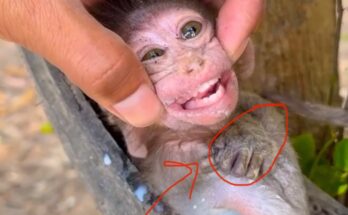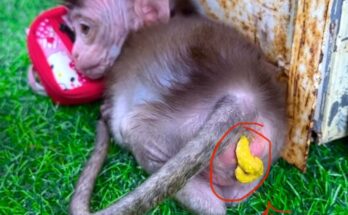In the heart of the jungle or even within the safety of a rescue center, baby monkeys are known for their boundless energy, mischievous eyes, and playful antics. But one of the most fascinating — and heart-melting — sights is watching a little baby monkey experience fear for the first time. It’s a moment that blends instinct, innocence, and survival, offering a rare glimpse into how even the smallest primates respond to the unknown.
Recently, a viral video made rounds on social media showing a baby capuchin monkey reacting adorably to a sudden noise. The tiny primate, startled by a falling leaf, leaped into the arms of its mother and covered its eyes with its tiny hands — an act that had millions of viewers smiling and saying, “Aww!” But beyond the cuteness lies a deeper story about how young animals learn from their environment.
Fear, as scientists explain, is one of the earliest emotions experienced by mammals. It’s essential for survival, especially in the wild where predators and unfamiliar sounds could mean danger. For baby monkeys, fear responses are not only instinctual but are also shaped by watching how their parents and troop members react. In this way, a scared little monkey learns not just what to fear, but how to respond — whether that’s running, freezing, or seeking comfort.
When the baby monkey in the video clung to its mother and covered its face, it wasn’t just being cute. It was demonstrating a classic behavior seen in many young animals: the freeze-and-hide reaction. This helps prevent detection by predators and allows time for the animal to assess whether the threat is real. In safe environments, like sanctuaries, these reactions often shift from survival-based instincts to more expressive behaviors — giving them a strangely human-like quality that captivates audiences.
There’s also something uniquely touching about seeing fear in baby animals. It reminds us of our shared emotional threads across species. Just like a toddler might cry and run to a parent when scared, a baby monkey seeks the warmth and reassurance of its mother. This parallel often sparks empathy in viewers and raises awareness about the emotional lives of animals.
What’s also important is how these moments can serve as educational tools. Wildlife experts and caregivers often monitor how baby monkeys react to stimuli to assess their development and well-being. A healthy fear response can indicate proper neurological function and emotional bonding. On the flip side, an absence of fear might raise red flags about trauma or neglect — especially in rescued animals.
In conclusion, a baby monkey getting scared may seem like a simple or funny moment, but it’s actually a window into complex instincts, emotional intelligence, and the deep bond between animal and caretaker. Whether it’s a rustling leaf or a surprising noise, these little reactions tell big stories about life, survival, and the universal language of feeling.



